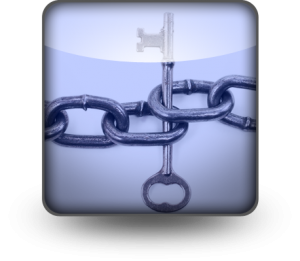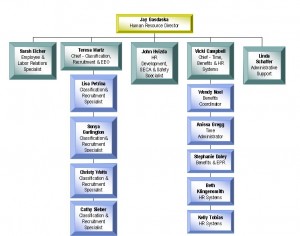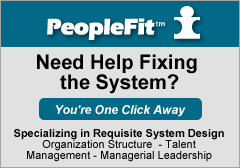Esther Dyson, Thought Leader on Engagement, Leadership, and Accountability
By Michelle Malay Carter on June 29, 2009
 I read Art Kleiner’s strategy+business interview with Esther Dyson, a thought leader in the field of high tech innovation.? Some thoughts from this article parallel what I’ve been saying here at Mission Minded Management.? (Emphasis added)
I read Art Kleiner’s strategy+business interview with Esther Dyson, a thought leader in the field of high tech innovation.? Some thoughts from this article parallel what I’ve been saying here at Mission Minded Management.? (Emphasis added)
On Engagement
“The really good marketers will become much more clever about what they do, and engage with people more effectively.? Conventional media will lose a lot of those marketers, because the marketers don?t need the media as much anymore.? Coca-Cola used to need Time magazine or television to reach consumers.? Now Coca-Cola can sponsor contests and get people to put Coke badges and links on their own Web sites.”
Why the War for Talent
On the War for Talent issue, I’ve said that high potentials no longer need hierarchical organizations to find employment.? They can work for themselves.?
Organizations, by their ignorance surrounding requisite work levels and human capability,?often force their high potentials out the door by not providing them with leadership aligned with their capability?or?work appropriate to their capability.?
Tweaking?Ms. Dyson’s quote for My Purposes
Organizations will need to become much more clever about what they do, and engage employees more effectively.? And by clever, I mean, designing work-enabling, trust inducing people systems.
What Doesn’t Lead to Lasting Engagement
What’s NOT effective when it comes to engagement?? Compensatory techniques e.g. perks, teambuilding exercises, bonuses.
We Don’t Need to Motivate, We Need to Provide an Appropriate Work Environment
Remember, I’ve said people are wired to work.? They do not need to be coerced.? They only need (1) work suited to their level of capability and interests?and (2)?as leadership suited to their level of capability.
Here is what Ms. Dyson has to say:
“Many people work much harder on a World of Warcraft role-playing team than they ever work in a paid job. They are very skilled and they do painstaking work, usually for only brownie points and recognition, because that work gives them a feeling of control and camaraderie.”
“It?s a mystery, and as an investor and as someone who?d like a better-run world, I?d like to solve it. Whatever makes work unpleasant, it?s often not really the nature of the task itself; it?s the involuntariness, and the fact that you can be punished by the person running the game.”
Ms. Dyson – it’s the system!!!!? We put employees in impossible situations every day and then blame them when things don’t go well.
All of the Accountability with None of the Authority
One of the things we do to induce dysfunction is we mismatch accountabilities and authorities.? We ask employees to be accountable for things for which they have no control.? This is fundamentally unfair, and fairness is necessary for engagement.? Ms. Dyson, you referred to it as “involuntariness”.
Ms. Dyson, you provided an example here when you were discussing Internet security and the ISP’s role:
“Until the costs of abuse are assigned to entities capable of stopping the abuse, it?s not going to get much better.”
Organizational Systems and Structure are an (Unenforced) Executive Leadership Accountability
What have I been saying for years here at Mission Minded:? Until executive leadership is assigned accountability for designing and implementing work-enabling, trust inducing people systems, it’s not going to get much better.
I’m OK.? You’re OK.? Let’s fix the system!
Filed Under Accountability, Corporate Values, Employee Engagement, Executive Leadership, High Potential, Organization Design, Requisite Organization, Strategy, Talent Management, Work Levels | Comments Off on Esther Dyson, Thought Leader on Engagement, Leadership, and Accountability
Check Your Perceptions at the Door, If You Can – A Friday Fascinating
By Michelle Malay Carter on June 19, 2009
Mission Minded Management is all about?debunking the widely held misconceptions that prevail about work, human capability, and what causes most dysfunction at work.? Hint:? I’m OK.? You’re OK.? Let’s fix the system.
A few weeks back I wrote a post called, Is the Story You are Telling Yourself Helpful?,? and I’ve since?found?a video clip that powerfully illustrates?one?point I was making in that post.?
Sometimes we see what we expect, not what really is.? There is power in what we expect or know to be ?true?, and we must be mindful of the ?stories? we tell ourselves.? Some are so powerful, we cannot override them.
Are the stories you are telling yourself about your work world helpful?
Filed Under Accountability, Corporate Values, Employee Engagement, Requisite Organization, Strategy, Talent Management | 1 Comment
Requisite Felt Fair Pay – Key Elements, Principles and Texts
By Michelle Malay Carter on June 18, 2009
 The following is part thee of a three-part post on Felt Fair Compensation. ?See Part 1 and Part 2 here.
The following is part thee of a three-part post on Felt Fair Compensation. ?See Part 1 and Part 2 here.
This Felt Fair Pay series was authored by my colleague, Barry Deane of PeopleFit Australasia.? My hat is off to him for addressing the topic so thoroughly and for backing it with historical data and research citations.
Key Features
Remunerations systems based on the Requisite Organization body of work have the following key features:
- Organizational levels are assigned to specific and objectively-defined ?levels of work?
- Specific remuneration limits are assigned to each organizational level.
- The spread of remuneration within a level (from ?entry level? to ?fully effective?) is set at 1:2 (i.e. a multiple of 2 from bottom to top)
- There is no crossing of the level boundaries in assigning remuneration i.e. a the top remuneration for a Level 2 role marks the bottom of remuneration for a Level 3 role
- Variation of remuneration for people in roles within a work level is focused on ?progression through the work of the role? i.e. from ?entry level? to ?fully capable?. Progression itself is determined through the judgement of the immediate manager in relation to the employee?s ?performance effectiveness?.
- Internal system parities and external (i.e. market) parities are dealt with through separate but linked processes
Key Behavioural Principles
These features reflect two behavioural principles of ?felt fairness?:
- People do/will acknowledge that it is fair that employees who do more complex work deserve to get paid significantly more than people doing less complex work. Note: I said, ?significantly? not excessively) ? and the significant difference is quantified in the RO body of work
- People acknowledge that those who work more effectively (i.e. in relation to doing work of the same complexity) should be ?differentially? rewarded. Perhaps this principle is better appreciated by the implication of this principle that those who do not work effectively should not be rewarded as much as those who do.
Key Texts
A few key texts which deal with felt-fair pay in some detail are:
- A General Theory of Bureaucracy, (noted above)
- Executive Leadership, Elliott Jaques and Stephen D Clement (1991 – 2002), Cason Hall & Co, USA
- Social Power and the CEO, Elliott Jaques (2002), Quorum Books, USA
- Requisite Organization, Elliott Jaques (1987 – 1998), Cason Hall & Co, USA
And RO in Australia (part story):
- The Line in the Sand, J.T.Ludeke QC (1996), Wilkinson Books, Australia
One Part of a Meta Requisite Organization Model
Having provided a few notes on the principle of ?felt fair pay?, I need to caution that this cannot be considered or deployed as a stand-alone principle.? There are a number of other precursor principles and practices relating to organizational design and managerial practice which must be understood and established.? I have alluded to some of these above (e.g. organizational stratification by ?levels of work?, managerial assessment of ?performance effectiveness?). Unfortunately, space does not permit me to delve into these matters here so I refer readers to the body of work that I have drawn attention to above (i.e. Requisite Organization) for further study.
This is the third in a series of three guest posts on Felt Fair Compensation by Barry Deane.
Filed Under Executive Leadership, Felt Fair Compensation, Requisite Organization, Strategy, Talent Management, Work Levels | Comments Off on Requisite Felt Fair Pay – Key Elements, Principles and Texts
Is it Possible to Agree on What Fair Pay Is? Science-Based Felt Fair Compensation ? A 60 Year History
By Michelle Malay Carter on June 17, 2009
 The following is part two of a three-part post on Felt Fair Compensation.??See Part 1 here.
The following is part two of a three-part post on Felt Fair Compensation.??See Part 1 here.
This Felt Fair Pay series was authored by my colleague, Barry Deane of PeopleFit Australasia. My hat is off to him for addressing the topic so thoroughly and for backing it with historical data and research citations.
Over 60 Years of Research
Lord Wilfred Brown and Dr. Elliott Jaques investigated this matter (among other organisational and leadership matters) as part of an extensive piece of workplace-based research known as the Glacier Project (UK 1948 to circa 1976). The following quotation is instructive, especially since it was written over 30 years ago:
?If the problem of differential payment is as critical an issue as experience would suggest, what then is to be done? A possible lead has been provided by the curious finding which first suggested that level of work might be measurable in terms of time-span of discretion; namely, that for each time-span level there is a corresponding level of pay felt by employed persons to be fair.
In work over a period of some twenty years in the Glacier Metal Company a correlation of about 0.90 has been found between time-span and felt-fair pay, for all types of work ? manual, technical, managerial, research, sales, finance, etc. In a study at the headquarters of Honeywell Corporation in Minneapolis, U.S.A., Richardson found a correlation of 0.86 for managerial and staff personnel in manufacturing, sales and research. He further found by means of regression analysis that time-span explained some 75% of the variation in felt-fair pay, as compared with actual pay (10%), and 28 other variables, none of which accounted for more than 1.5% of the variation. There is further support for the validity and reliability of these studies in work in Holland and in Canada, and in less systemic and unpublished testing in a number of other countries besides.?
-Elliott Jaques (1976, ?77, ?81, ?83) A General Theory of Bureaucracy, Heinemann UK
The ?time-span levels? referred to above concerns the recognition/discovery of levels of complexity of work, a necessary construct informing the layering of organisations i.e. what is the nature of the work to be done by the organisation and how many levels of management should there be to achieve the work.
The Glacier project is well documented.? Felt-fair pay is also well documented.
Requisite Organization – The Meta Model
The whole body of work of which felt-fair pay is a component is now known as Requisite Organization (RO). This body of work was introduced into Australia late in the 1970s by Sir Roderick Carnegie, then CEO of CRA Ltd (now Rio Tinto).
Requisite Organization Library
There is a large amount of academic and other professional documentation of the CRA experience (and others) and RO, much of which is listed in an extensive bibliography published by the Global Organization Design Society, a not-for-profit organisation based in Toronto Canada. You can download this bibliography free from GO?s website.
More tomorrow…
Stop by tomorrow for the third post in this guest series on Requisite Felt Fair Compensation by Barry Deane.
Filed Under Corporate Values, Executive Leadership, Felt Fair Compensation, Requisite Organization, Strategy, Talent Management, Work Levels | Comments Off on Is it Possible to Agree on What Fair Pay Is? Science-Based Felt Fair Compensation ? A 60 Year History
The Predictable Outrage over Outrageous Executive Pay
By Michelle Malay Carter on June 16, 2009
 The following is part one of a three-part post on Felt Fair Compensation.?
The following is part one of a three-part post on Felt Fair Compensation.?
This Felt Fair Pay series was authored by my colleague, Barry Deane of PeopleFit Australasia.? My hat is off to him for addressing the topic so thoroughly and for backing it with historical data and research citations.
Paying Executives More For Less?
Interest in what is seen as excessive executive pay, has been gathering over a number of years now ? at least ten years. The current financial melt-down provides emphasis as attempts are made to reconcile excesses of pay with business results.
Could We Ever Agree on Fair Pay?
Watching this game of executive justification for excess (e.g. ?My job is really, really big, and I deserve as much as I can get.?) being met by public anxiety (?It sure seems a lot, but then maybe I couldn?t do such a really big job, or maybe I?m just envious?), one could be forgiven for thinking that the question, ?What is fair pay?? cannot possibly be answered.
We Already Have
The ?fact? is that work to address this question has already been done – and the key determinants of ?felt fair pay? have been identified. At the very least one might say that there is compelling science-based evidence that this question has been answered substantially.
An Evidence-Based Way to Pay?
The more troubling question to me is why it is that in all of the current public debate on this subject, there appears to be no expectation that board directors, legislators and policy makers must find and use an objective, evidence-based link between the work being done and the assignment of pay for that work?
Can We PROVE Executive Pay is Excessive?
The presence of significant and persistent community outrage about executive pay is predicted by the substantial, science-based field work that has already been done. The work also suggests that such (predictable) outrage is founded in deep feelings about fairness and justice. Surely it is important (now more than ever) for us to know whether such feelings are justified and, if they are, what might underpin them? It is a fact that the work that has been done points decisively to such a community-based idea about fair pay and to the key determinants for achieving that.
More on this tomorrow…
Come back tomorrow and Thursday for Parts?2 and 3 of this guest series written by Barry Deane.
Filed Under Executive Leadership, Felt Fair Compensation, Organization Design, Requisite Organization, Strategy, Talent Management, Work Levels | Comments Off on The Predictable Outrage over Outrageous Executive Pay
How To Have Employees Experience their Manager As A Leader – A Design and Screening Solution
By Michelle Malay Carter on June 10, 2009
 My last post?had the word impotent in it twice, so those who read my posts via email may have had the post hijacked by a spam filter.?
My last post?had the word impotent in it twice, so those who read my posts via email may have had the post hijacked by a spam filter.?
Additionally, because my last post was so long, I am?repeating the end of my last post under a new title with one new context setting introductory paragraph.
Managers are managers by virtue of their position.? Employees will experience their managers as leaders when two criteria are met:
- When the manager’s role is located in the next higher work level than the employee.
- When the manager’s cognitive capability falls into the next higher level.
Organizations that understand this can design for leadership and screen for “leadership capability” which is relative to whom is being led.
What Do Employees Want in a Manager?
Paraphrased from Ralph Rowbottom and Davis Billis’, Organisation Design, A Work Levels Approach, when employees encounter knotty problems, employees want a manager who, by virtue of his/her position, has the authority to (this is the requisite organization design part – one role at each work level):
- help by altering the basic context of their work
- alter the whole system in some way
- operate a different set of signals and levers
- make available new types of resources
- initiate new trains of investigation or negotiation
And (here is the individual part which can be screened for), is personally cognitively capable to:
- see the world with a qualitatively different perspective
- overview the whole field of their activity
- provide them with some authoritative assessment of their performance from a higher standpoint
- set them going in new directions and head them off from others
Satisfying Leaders have A Higher Level Role and Matching Cognitive Capability – It’s All Relative to Me
In summary, employees will experience their manager as a leader when both the manager’s role and the manager’s cognitive capability fall into the next level higher than the employee. Organization’s can design and screen for this.
I’m OK. You’re OK. Let’s fix the system.
Is your manager your leader?
Filed Under Employee Engagement, Organization Design, Requisite Organization, Talent Management, Work Levels | Comments Off on How To Have Employees Experience their Manager As A Leader – A Design and Screening Solution
Requisite Organization Design Ensures Managers Can be Leaders
By Michelle Malay Carter on June 7, 2009
 Organizations expend tremendous resources trying to whip individual managers into being leaders via training, coaching, inspiring, punishing, demanding, pleading…
Organizations expend tremendous resources trying to whip individual managers into being leaders via training, coaching, inspiring, punishing, demanding, pleading…
Although these various approaches may, in fact, provide some results, if your organization design is structurally flawed, even your most motivated, knowledgeable and well trained manager leaders will be rendered impotent.
Who is MacroManaging Our Organizations?
We need a dual approach.? One that focuses on individual development and one that has its focus on the system within which are leaders are working.? (By the way, this is executive leadership work, and in many organizations, it, i.e. strategic talent management and organization design,?appears to be missing or seriously misinformed.)
I said in a previous post that:? What we see in corporate world is akin to asking employees to be accountable for preventing disease when the organization refuses to install indoor plumbing or filter its contaminated well water.? Employees are working in polluted environments created by misinformed, piecemeal, dysfunctional people systems and organizational design, and we keep blaming them for showing symptoms of illness.
How Can We Design an Organization that Enables Leadership without “Fixing” Even One Employee?
We can enable leadership from managers, and consequently, give employees what they want and need in a manager by ensuring all managerial roles are located one work level above the role of their direct reports.? The design principle is really quite simple, but it requires becoming knowledgeable about work levels.
What Do Employees Want in a Manager??
Paraphrased from Ralph Rowbottom and Davis Billis’, Organisation Design, A Work Levels Approach, when employees encounter knotty problems, employees want (I say deserve) a manager who, by virtue of his/her position, has the authority to:
- help by altering the basic context of their work
- alter the whole system in some way
- operate a different set of signals and levers
- make available new types of resources
- initiate new trains of investigation or negotiation
And (here is the individual part), is personally cognitively capable to:
- see the world with a qualitatively different perspective
- overview the whole field of their activity
- provide them with some authoritative assessment of their performance from a higher standpoint
- set them going in new directions and head them off from others
Satisfying Leaders have A Higher Level Role and Matching Cognitive Capability – It’s All Relative to Me
In summary, employees will experience their manager as a leader when both the manager’s role and the manager’s cognitive capability fall into the next level higher than the employee.? Organization’s can design and screen for this.
I’m OK.? You’re OK.? Let’s fix the system.
Is your manager your leader?
Filed Under Executive Leadership, Organization Design, Talent Management, Work Levels | 2 Comments
Appropriate Focus? – A Friday Funny
By Michelle Malay Carter on June 5, 2009
A while back I wrote a poem about focusing upon the right things.? This sign reminded me of that poem.? (Be sure to squint read the fine print.)? The sign is for your Friday funny pleasure.? I was serious when I wrote the poem.
I’m OK.? You’re OK.? Let’s fix the system.
Seek and Ye Shall Find
Organizations that seek to enable will find engagement.
Organizations that seek engagement will find manipulation.
Organizations that seek to encourage will find development.
Organizations that seek development will find resistance.
Organizations that seek to question will find innovation.
Organizations that seek innovation will find elitism.
Organizations that seek to align will find communication.
Organizations that seek communication will find platitudes.
Organizations that seek to understand work levels will find leaders.
Organizations that seek leaders will find power mongers.
Organizations that seek to clarify will find accountability.
Organizations that seek accountability will find scapegoats.
Organizations that seek to be fair will find trust.
Organizations that seek trust will find teambuilding exercises.
~ Michelle Malay Carter
Filed Under Accountability, Employee Engagement, Executive Leadership, Managerial Leadership, Requisite Organization, Strategy, Talent Management, Work Levels | Comments Off on Appropriate Focus? – A Friday Funny
When Your Organization Design is Too Fat Expect Impotent Managers
By Michelle Malay Carter on June 3, 2009
 In my last post, I?talked about the downside of having too many layers within your organizational structure.? How can you tell if this is the case?
In my last post, I?talked about the downside of having too many layers within your organizational structure.? How can you tell if this is the case?
Impotent Managers
When you have a manager and a direct report whose roles fall into the same work level (requisite design calls for one role in each layer), you will find that although the manager is generally willing to help the direct report, s/he is rendered impotent by the organization’s flawed structure.
How Does this Manifest?
When an employee approaches his manager for help with an issue, and the manager’s response is, “We will have to ask my manager”, you have strong indicator that the manager’s role and the employee’s role fall within the same work level.
The Roles are Real, The Reporting Relationship is Flawed
This doesn’t mean that each role in not legitimate in its own right, but it should not be a REPORTING relationship, it should be a peer relationship with perhaps one being considered more senior.
When a manager?is frequently saying?either, I’m not sure how to handle this either OR I can go no further within the scope of my job and authority, an investigation is in order.
According to Ralph Rowbottom and Davis Billis’, Organisational Design, The Work Levels Approach, over time, the employee will not perceive his manager as his real manager but he will look to his manager-once-removed (his manager’s manager) as the authoritative manager.? How will the employee view his present “artificial manager”?? At best, he will see him as a senior colleague, at worst, a real nuisance.
I’m OK.? You’re OK. Let’s fix the system.? In my next post, I will give you the positive test for determining whether a manager role is in the next higher layer than his/her direct report’s role.
Have you ever had an impotent boss?
Filed Under Organization Design, Requisite Organization, Work Levels | 2 Comments
Hate Your “Boss on Paper” but Receive Leadership Elsewhere?
By Michelle Malay Carter on May 26, 2009
 Too Many Managerial Layers Bogs Down the Work
Too Many Managerial Layers Bogs Down the Work
Having too many reporting layers in an organization creates frustration and slows decisions and communication down.? It impedes work.? Considering that humans are wired to work, they get cranky when their work is impeded.
Best Intentions Does Not Always Equal Best Practices
Organizations often add management layers in order to justify increasing the salaries and status of long-time employees.? Good intention.? Poor practice.
Each Reporting Layer Must Add Value
Using a work levels model, all roles on an organization chart should report to a role that falls in the next higher level of work.? When organizations add reporting layers within work levels it will spell trouble.
The “Real Boss” Phenomenon
Quite?frankly, you are not fooling anyone.? The layers being created are experienced as artificial.? Humans have an intuitive sense of who their “real boss” is, and it will be someone whose role is in the next higher level of work (assuming the incumbent’s level of capability matches the work level of the role).
Haven’t you ever heard someone say, well, my boss “on paper” is Susie, but my “real boss” is Joe? This is the “real boss” phenomenon.
Humans don’t resent being led. The resent being expected to submit to a boss who is not capable of being their leader.? This happens frequently within organizations with too many layers.
Regardless of what the org chart says, people will seek leadership from someone who is capable of providing it to them.
Designing for Effectiveness
In my next post, I’ll detail what it is employees are looking for in a real boss, and how organizations can ensure their organizational design provides employees with want they need to get their work done.
I’m OK. You’re OK. Let’s fix the system.
Have you ever reported to an artificial boss? How did it feel?
Filed Under Employee Engagement, Organization Design, Requisite Organization, Talent Management, Work Levels | Comments Off on Hate Your “Boss on Paper” but Receive Leadership Elsewhere?

